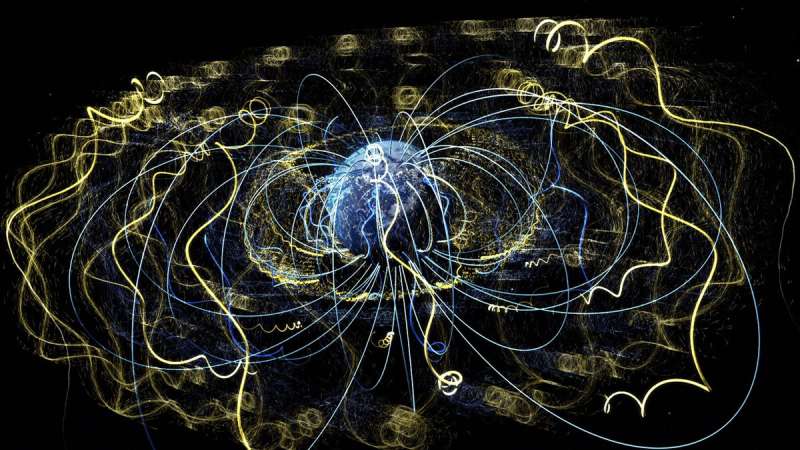Unifying models of chorus wave frequency chirping

Whistler mode chorus waves are electromagnetic emissions common in planetary magnetospheres. Among other impacts, their scattering of magnetospheric electrons is one driver for the formation of auroras. An important attribute of these waves is frequency chirping, in which the frequency of the emission rises or falls nearly monotonically with time.
The existence of chorus wave frequency chirping has been known since the dawn of spaceflight, but to date, no consensus mechanism for it has emerged. Instead, the literature contains a number of mechanisms explaining both its existence and the rate of chirping. For instance, one model relates the chirping rate to inhomogeneities in the background magnetic field, an idea that has been subsequently supported by observations. Another connects the rate to the amplitude of chorus waves; this hypothesis has also received observational support.
Tao et al. propose a new model, called Trap-Release-Amplify (TaRA), that aims to unify these seemingly discordant hypotheses, and they conduct computer simulations to evaluate its implications. As in other models, TaRA describes electrons that encounter a chorus wave packet, align their phase with the packet, and then emit new chorus emissions. The electrons propagate opposite to the motion of the wave packet, meaning each interaction progresses through several distinct regions with different physical properties.
The authors demonstrate that TaRA can encompass both the background magnetic field inhomogeneity and wave amplitude hypotheses of frequency chirping. In their model, these mechanisms represent two separate stages of interaction between an electron and the wave packet. Thus, it is reasonable that both of these mechanisms can provide different estimates of the chirping rate and simultaneously agree with physical observations. Those observations, they argue, are simply measuring different stages in the chorus generation process.
More information: Xin Tao et al, A "Trap‐Release‐Amplify" Model of Chorus Waves, Journal of Geophysical Research: Space Physics (2021). DOI: 10.1029/2021JA029585
Provided by American Geophysical Union
This story is republished courtesy of Eos, hosted by the American Geophysical Union. Read the original story here.




















